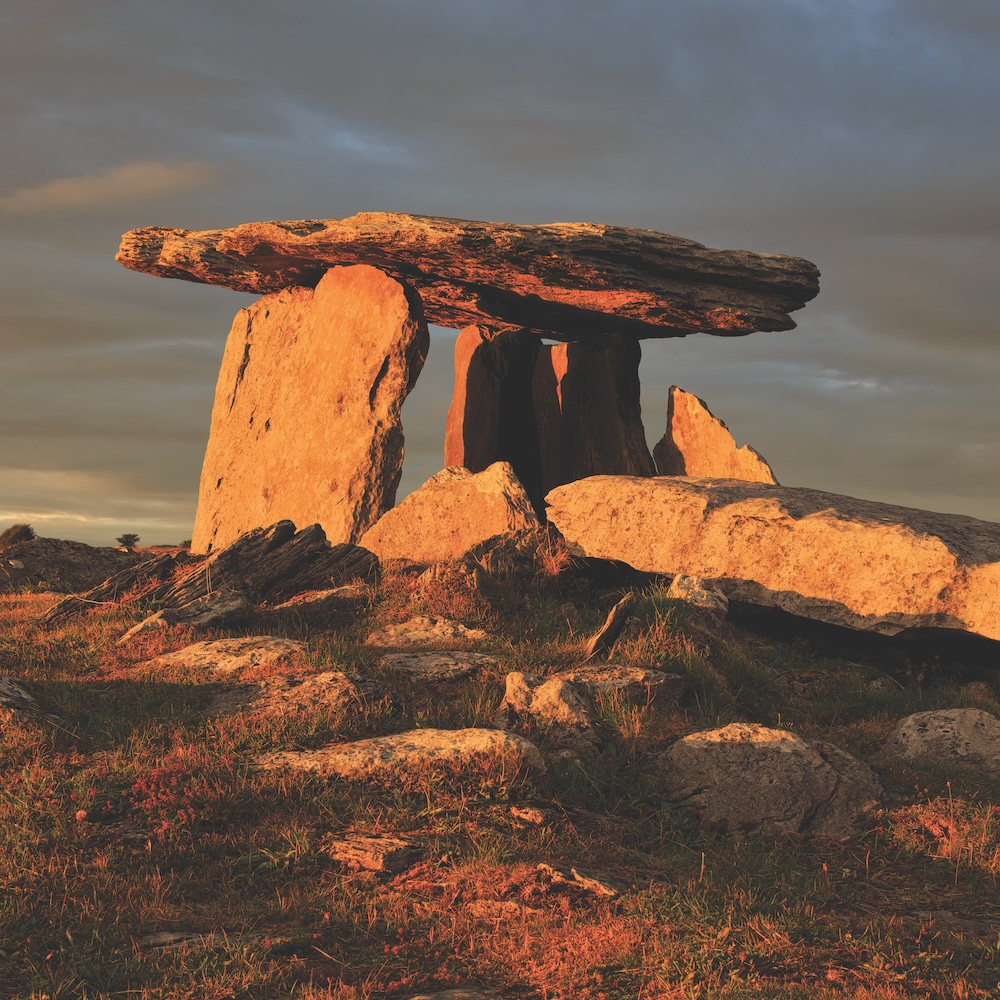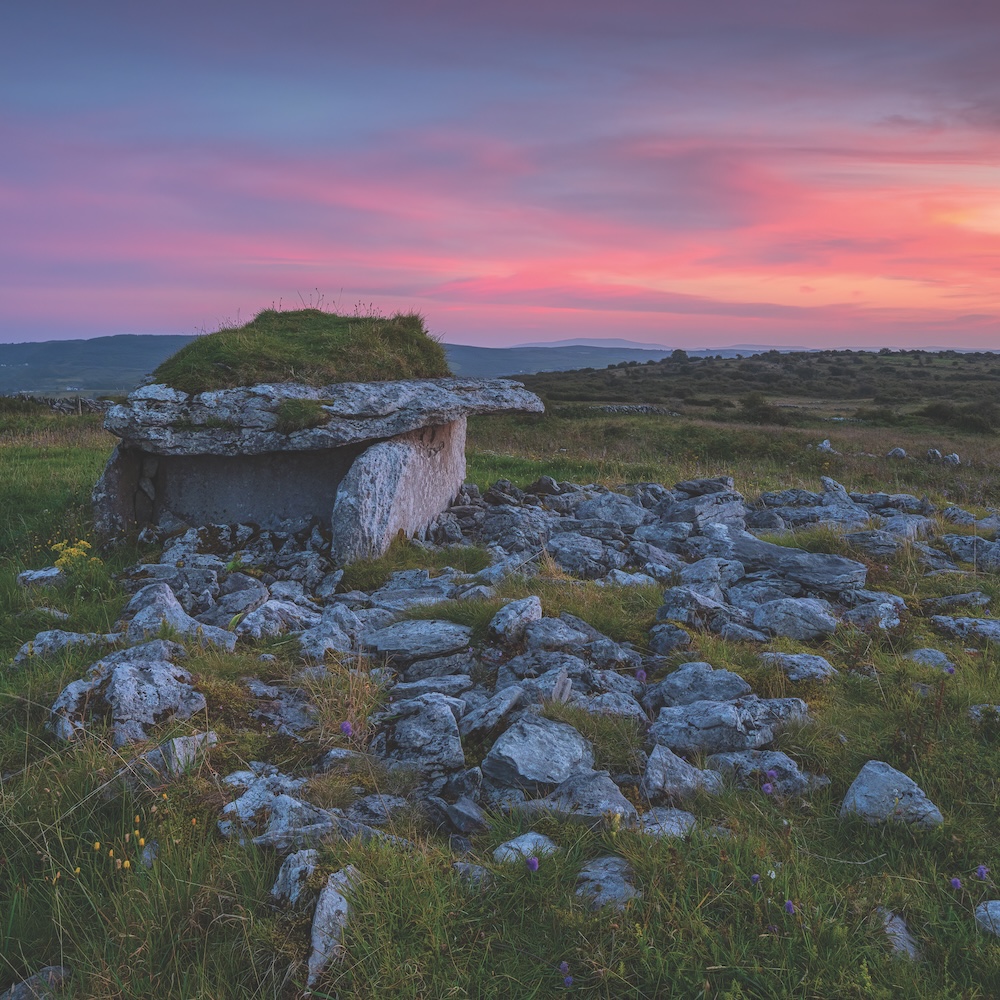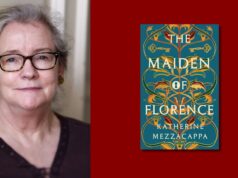
An extract from The Whispering Land, Myths, Legends and Lore from the Wild Atlantic Way by Carsten Krieger
Before the actual purpose of the Neolithic tombs was discovered, they were considered to be the overnight refuges for Ireland’s most famous on-the-run mythological couple. The structures were widely given the name leaba, meaning bed, or more specifically Leaba Dhiarmada agus Ghráinne, Diarmuid and Gráinne’s bed.

Gráinne was the daughter of Cormac Mac Airt, legendary High King of Ireland. Fionn Mac Cumhaill was the equally legendary hunter-warrior, leader of the warrior band Fianna and also renowned as a seer and a poet. After the loss of his wife Sadhbh, Fionn fell into deep desperation and grief, so his men decided to find him a new wife. Gráinne was their choice, in their opinion the only woman worthy to sit at Fionn’ s side. Arrangements were made and a big feast was held to celebrate the engagement of the couple.
Young Gráinne, however, realising that Fionn was older than her own father, started having doubts about the impending nuptials. Making the acquaintance of Diarmuid, one of Fionn’s handsome young warriors, might also have played a role in her reluctance. Gráinne, once she had made up her mind, came up with a plan, slipping a sleeping potion into the drinks of the gathered party.

After everyone had passed out, she convinced Diarmuid to run away with her. Diarmuid, flattered, reluctant and tempted in equal amounts, at first refused out of respect for and loyalty to his leader, but eventually he gave in. In some versions of the tale Gráinne had to put a spell on Diarmuid to convince him; in others her beauty and youth were enough to win the young warrior over.
From this moment on the couple was on the run, soon pursued by Fionn, and the resulting chase, which took place all over Ireland and resulted in all kinds of adventures, makes up a part of the Fenian Cycle, one of the four major collections of early Irish mythology. The storyline also makes an appearance in Scottish folklore and is thought to be one of the main inspirations for the Tristan and Iseult saga.
The story nearly had a happy ending after Diarmuid’s foster father, Aengus, managed to negotiate a peace with Fionn. Diarmuid was forgiven and allowed to rejoin the Fianna. The young couple settled in County Sligo, had five children and almost lived happily ever after.
Many years later, Diarmuid and Fionn went on a boar hunt together during which Diarmuid was mortally wounded by the cornered boar. Fionn hurried to his side, but instead of saving him, which he could have done by simply letting him drink water out of his hands, Fionn let the water run through his fingers and Diarmuid passed away on the spot. What followed differs greatly between the various versions of the tale. In one, Gráinne swore bloody revenge, in another she passed away from grief, and in yet another she reconciled with Fionn and married him.

In Irish folklore the portal tombs, the leapacha, were the places where Diarmuid and Gráinne spent their nights while being on the run, and many of these ancient structures all over Ireland still carry the couple’s name. Through excavations, the true nature of these Neolithic monuments was eventually revealed.
It is now thought that portal tombs originated from house-like wooden structures, built as houses for the dead. Over time they became more sophisticated and permanent, were aligned to celestial events and were used not only as burial sites but also as landmarks for the associated clan.












